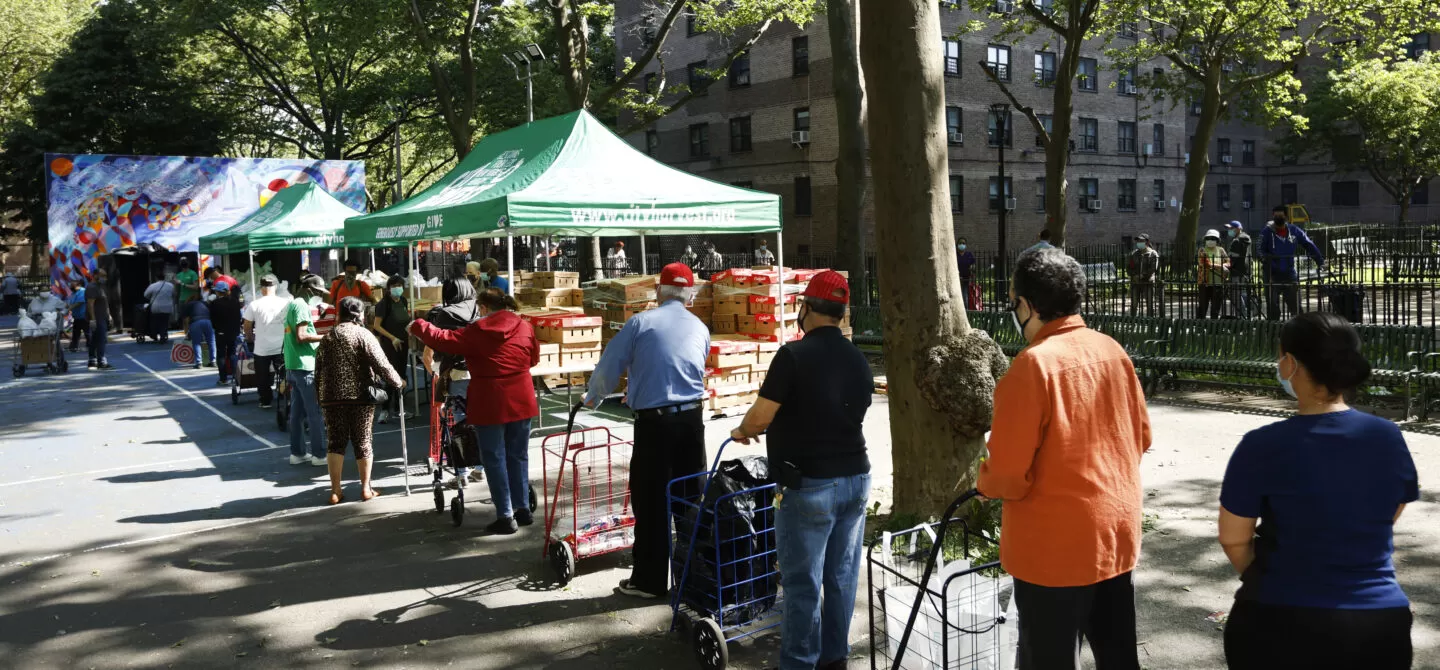
Hunger in NYC
No New Yorker should have to worry about where their next meal will come from.
City Harvest is committed to being here, rescuing fresh produce and delivering it for free to help feed New Yorkers across the five boroughs who are experiencing food insecurity.
-
50%
of working-aged households in New York City are struggling to make ends meet.
Even before the COVID-19 pandemic, too many New Yorkers were struggling to make ends meet 50% of working-age households in New York City—or nearly 3 million people—do not make enough to afford basic fixed expenses like rent, and utilities, as well as food, according to the recent True Cost of Living report released by The Fund for New York City and United Way for New York City in partnership with City Harvest. This comes amid high costs for housing and food and following the expiration of vital government supports that kept many families afloat during the pandemic.
People experiencing food insecurity may not know when or where their next meal will come from. Often, food is the first elastic expense in a budget that gets cut if a household also needs to pay for expenses like rent, utilities, childcare, or medical bills.
To be considered self-sufficient, a family with two adults, one preschool-aged child, and one school-aged child now needs to make more than $100,000 in all five boroughs.
-
1.4 Mil
more than 1.4 million New Yorkers are experiencing food insecurity.
Too many of our neighbors are experiencing food insecurity—particularly in the marginalized communities that City Harvest has long served.
We know that hunger doesn’t fall equally across the city. It hits particularly hard in the communities of color that have been disproportionately harmed by decades of policy inequities and systemic failures.
No New Yorker—no matter who they are or where they come from—should have to worry about where their next meal will come from. City Harvest is committed to providing free nutritious food to every New Yorker who finds themselves in need of food assistance.
-
1 in 4
children in New York City are experiencing food insecurity.
While economic challenges hit every corner of New York City over the last few years, the effect on families and children has been particularly pronounced. Over the past year, average monthly visits to food pantries, soup kitchens, and community food programs across the five boroughs by families with children jumped 100% compared to 2019, the largest surge in pantry visits among various age groups.
Since the start of the COVID-19 pandemic, many vital pandemic-era government supports—like the Child Tax Credit and emergency SNAP allotments—have expired, leaving many families with even fewer resources.
-
85%
increase in average monthly visits to NYC food pantries and soup kitchens since 2019.
According to a City Harvest analysis of FeedNYC data, average monthly visits to soup kitchens and food pantries across NYC are up 85% compared to pre-pandemic levels.
A family or household may experience food insecurity for a brief period of time (for example, while a parent is between jobs) or for much longer (for example, a senior living on a fixed income). Research from Robin Hood and Columbia University shows that most people that visit food pantries—67%—have a job, a reflection of the extreme unaffordability of our city.
We know from previous crises that it can take years for food security levels in New York City to recover following a disaster, and we expect the need to remain high for several years.

From Our Participants
Ana, a community member who visits City Harvest’s Prince Hall Mobile Market in Manhattan:
“I go to the grocery store and I almost cry because everything is so expensive, especially the eggs, the meat, everything. I know how to manage my money. I don’t buy expensive clothes, but I’d rather pay my bills than buy food. [City Harvest] has helped me a lot. I’m very grateful.”
Denise, a community member who visits City Harvest’s Stapleton Mobile Market on Staten Island:
“I look at my pantry at home and I don’t have onions, potatoes, sweet potatoes. There’s no way to adjust to it. You have to, because you need to eat, but [prices are] just so much higher. I just take it as it comes—what else can you do?”